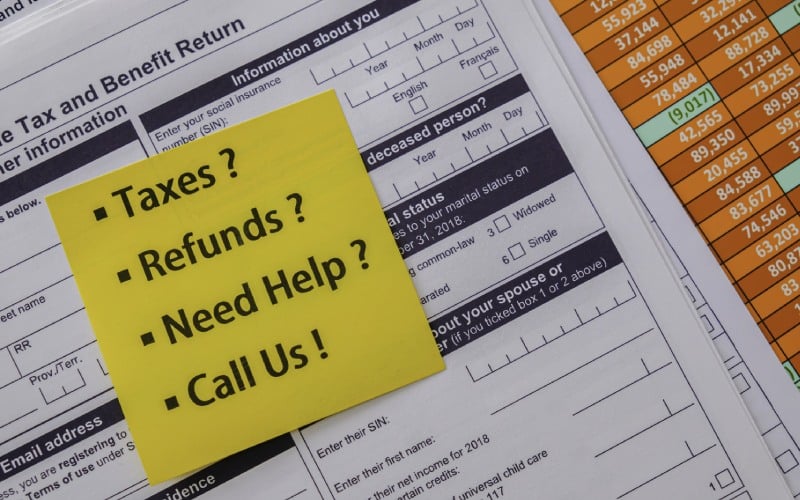There are several tax planning strategies that are recommended to reduce the amount of taxes you may have to pay. Generally, tax planning involves finding potential tax deductions or tax credits. Tax deductions reduce taxable income, while credits reduce what taxes you pay on your taxable income.
Table of Contents
ToggleReduce Taxable Income and Maximize Tax Deductions
A deduction lowers your taxable income and the tax rate used to calculate your tax, for a larger refund. A credit reduces your tax amount to be paid. Certain tax credits can give you a refund even if you have no withholding. Withholding is when tax is taken from you and directly paid to the government – usually, employers withhold a percentage of your income to pay to the CRA.
One strategy is using pre-tax dollars to lower the amount of income that is taxable. Tax deferral is another, under the assumption that it is better to delay paying tax, as long as it does not increase tax owed, and that it is better to be in control of when you choose to pay your tax bill.
Pre-Tax vs. Post-Tax Deductions
A post-tax deduction is taken from an employee’s paycheck after taxes are withheld. These deductions do not reduce your tax burden. Post-tax deductions reduce after-tax pay instead of pre-tax pay.
Common pre-tax deductions include health plan and health savings account contributions, retirement contributions, dental plans, flexible spending accounts, disability insurance payments, and more. These are often offered through employer programs and can be an effective strategy, as they are paid for with pre-tax dollars.

Business Income
Deduct Business Expenses
Deducting work expenses, such as work-related costs for materials, shipping, marketing and advertising, travel, and communications can help.
Use Depreciation
Your business can recover the loss in value of your assets as an expense. You can deduct a percentage for depreciation.
Motor Vehicle Expenses
Vehicle costs can be claimed as an expense if you keep a mileage log. The business use of fuel, insurance, interest, maintenance, and more can be claimed.
Defer Income
In some situations, you may be eligible to defer some of your salary to the following year, if you suspect your income will be less, by waiting to bill a client or requesting a bonus to be held back for a month.
Small Business Deduction
If your business is eligible, the small business deduction lowers the tax rate, allowing a deferral of tax and letting your business income be taxed at a lower rate than standard corporation rates.
Carry Over Deductions
If you can’t use a deduction or credit, carry it over, so it is available if you can take advantage of it in future years.
Consult A Professional To Decide On Options For Receiving Income

There are options for how you can take income from your business, whether as a salary or dividends, or a mix of both. An accountant can advise you.
Individual
Maximize RRSPs, TFSAs, RESPs
Tax-deferred and tax-friendly programs like Registered Retirement Savings Plans (RRSPs), Registered Education Savings Plans (RESPs), and Tax-free Savings Accounts (TFSAs) help lower the taxes you owe.
Contributions to an RRSP lower your income for tax purposes. Contributions of up to 18% of your previous year’s earned income up to an annual maximum ($30,780 for 2023) are allowed. Investments grow tax-free until you withdraw your money (generally when you retire and have a lower income), thereby deferring the tax until you are in a lower bracket. This means your investment income is taxed at a lower rate.
The TFSA annual contribution limit is increasing to $6,500 in 2023. Contributions are made with after-tax dollars and investments grow tax-free, meaning that you do not pay any tax when you withdraw.
RESPs help you save for a child’s education but also allow investments to grow tax-free. When amounts are withdrawn, the child, who generally has a much lower income, pays the taxes so less tax is owed. An RESP also enables you to take advantage of Canada Education Savings Grant amounts.

Split Income or Pension With Your Spouse
Splitting income can lower your overall income. It can be done through spousal RRSPs or through splitting a pension. For spousal RRSPs, the higher earner contributes to the spouse’s RRSP to receive the deduction for tax purposes. When funds are withdrawn, tax liabilities are owed at the lower earner’s tax rate. The Income Tax Act in Canada requires the funds received to be kept in the RRSP account for three years.
Income splitting can work for pension income. Pension Plans, RRIF, and RRSP annuity payments can be split, as well as some others.
Principal Residence Exemption
Selling an asset results in a capital gain that is subject to tax, but primary residences are exempt. You need to live in the home, and it can’t be a rental property to claim the exemption. With a vacation home, it is beneficial to strategize on which property should be considered principal.
Research Tax Credits
There are several credits that many people are not aware of. Always research to see what new tax opportunities are available and which are being phased out. Some current credits or opportunities available include:
- Eligible moving expenses may be deducted from income at your new job location.
- The Canada caregiver credit helps those supporting dependents with infirmities or disabilities.
- First-time home buyers’ amount lets you claim $5,000 if you, your spouse or common-law partner bought a qualifying home
- The medical expense tax credit allows for several medical expenses to be claimed, if you are not reimbursed for them
- The charitable tax credit can provide a return of up to 33% of your charitable donations from federal tax and potentially more from provincial tax. Donations can be carried forward for up to five years.
- Donating eligible investments provides a tax credit and may help you avoid the capital gains tax. Determining the tax benefits for this is complicated; an accountant can help you lower your tax obligation.
Impacts Of Covid-Relief
It is important to be aware of any tax implications, if you participated in or used any COVID-19 relief programs, including wage and rent subsidies.
Assistance from the Canada Recovery Hiring Program, Tourism and Hospitality Recovery Program, and Hardest-Hit Business Recovery Program, is taxable as income.
If you received a Canada Emergency Business Account (CEBA) loan, the repayment deadline has been extended from December 31, 2022, to December 31, 2023. If you repay on time, you could be eligible for loan forgiveness of up to 33%, with a maximum of $20,000.
Need Help?
Dental Tax helps dentists and their businesses with tax planning strategies, to maximize their business income.
We can help you, as a business owner, to pay less tax, with our strategies designed specifically for dentists, tailored and optimized for you. Just like you specialize in dentistry, we specialize in tax planning for dental professionals.
We will help you find more deductions to claim, and ensure your dental practice is structured optimally.
By maximizing your tax savings, we help you have more to put towards your business.
Adam has an MBA from the Richard Ivey School of Business in London and also holds a Chartered Investment Manager designation.
- Maximizing Tax Deductions for Dental Practices - April 1, 2024
- Tax-Efficient Investing For Dentists - March 28, 2024
- 2024 Tax Insights: Key Changes Every Dentist Needs to Know - March 6, 2024





